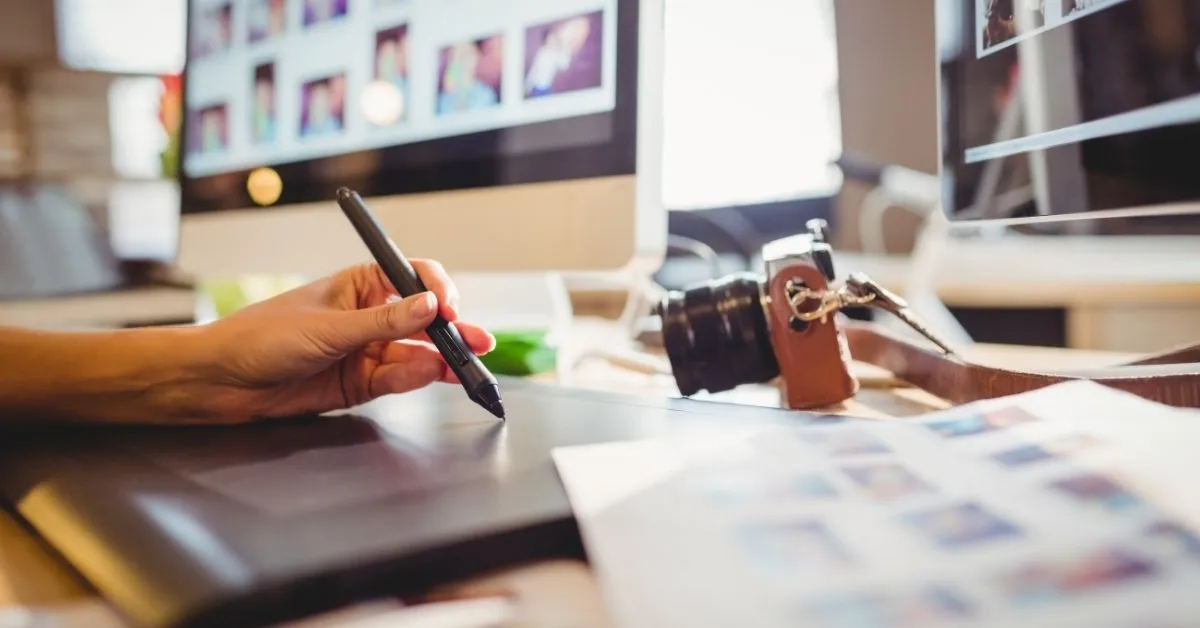Are you a blogger ready to create a recognizable brand? Breaking into the blogging world can be difficult—there are a lot of established blogs out there. You need to stand out.
One of the best ways to set yourself apart as a blogger is by creating a memorable logo. Your blog logo should help you solidify your audience and niche, creating the perfect space for you to thrive.
If you are ready to create a blog logo, keep reading for eight essential design tips.
8 Tips for Designing a Blog Logo
You can make your own logo, even if you aren’t a pro at design! Using the best logo makers out there, you can plug in some details about your brand and end up with some really great logo choices. Logo makers are best used when you understand some basic principles of logo design. Here are eight tips you will want to follow when creating a logo for your blog.
#1 Start with your niche and audience.
If you are just starting up a blog, this may be an important first step you haven’t done yet. If you have started your blog and just want to solidify your branding, then you may have already worked through this step. You need to know what your blog is going to focus on (your niche) and who you are going to write for (your audience).
Sometimes your niche will come from your past experiences, your education, your career or your passions. Many bloggers have a tough time figuring out the perfect niche—not too broad, but broad enough that they have plenty of options for content.
Understanding your niche and audience is crucial to your branding. Your logo is going to have to represent what you want people to know about your brand from the first second they see your blog banner or social media profile picture.
#2 Get inspiration from other brands.
You definitely don’t want to take ideas from other bloggers. But, you do want to get inspiration for what attracts your audience. If you know some of your audience’s favorite brands, you can check out their coloring, logo style, typography and imagery to start getting ideas for your own look.
Use brands that aren’t in your industry or niche but do appeal to your audience. Don’t ever copy a brand’s logo, but use multiple logos to get ideas for your own twist on logo design.
#3 Decide on a logo style to fit your blog.
It’s a great idea to create a mood board. Start writing down the feelings you want the logo to convey, the imagery that really speaks to you and the aesthetic of your content (videos or pictures). When you start to get a feel for your blog style, you will have a pretty easy time choosing the right logo style.
Your logo may or may not include:
- Pictorial imagery
- Abstract imagery
- Geometric shapes
- Wording/Text
- Your blog name
- Initials
- One letter (monogram)
With all of these elements, you will also have to determine the design style. A lot of this will come back to the research you’ve already done on what your brand is trying to convey and what other brands are doing to attract your audience. Your logo style could be down-to-earth, sweet, bright, happy, studied, sterile, journalistic, artsy and more.
#4 Pick colors that align with your aesthetic.
When you know what style and message you are going for, you can start considering color palettes. Blogs may be very colorful or they might be largely monochromatic with a lot of black and white in their design. Your blog theme might also come into play when it comes to choosing the right colors. While some logos will use multiple colors or gradients, other logos choose just one or two colors to keep things simple.
Colors have meaning, so you need to consider what feelings your logo is going to spark by the inner instinct when people get their first look. While blue is considered serene and trustworthy, red is often passionate and energetic. Orange is creative, purple shows value and yellow shows happiness and promise. Learning the basic meanings of each color or color combination will help you pick the right look.
#5 Choose an easy-to-read font.
A good logo will be easy to read for the audience. You want your brand to be memorable. If people don’t remember your blog name, they will have trouble looking you up later to check in. If you are having trouble finding the right font or if things get too crowded, it’s completely fine to not use any text at all.
Most blogs use their blog name within the logo, but you definitely don’t have to. You can always create a logo by itself—for things like email signatures, your media kit and social media profile pictures—and then also make another version that pairs the logo with your logotype for your site banner.
#6 Make different versions (and get feedback).
If professional graphic designers aren’t going to stop with their first idea, why would you? Your gut reaction may not be far off, but it’s rarely a well-honed concept.
You need to start out with a LOT of different ideas that are all derived from your research on other brands, your brand’s aesthetic, your target audience’s likes and concepts that work with your content niche. These quick, small sketches are very simple ideas that you will use to get thoughts out of your head and onto paper.
Use this time to try to simplify your concepts down to their most basic forms. Don’t overcomplicate your design!
The small sketches (about 1” square), should then be narrowed down to the top 3 – 5 ideas that are then turned into roughs of your concepts. You will work with the top 2 – 3 ideas in your logo maker program to start working on the final version.
It may be a good idea to get feedback along the way. It’s easy to get so wrapped up in the design process that you hardly know how to separate yourself from the concept and look at it critically. Only ask the opinion of people who have an understanding of design and the audience you are targeting.
#7 Export the right size and color for your needs.
Max logo size varies across different blog themes and social media platforms. Plus, you need a print version of your logo in case you ever want to produce something really big (like a billboard). A professional program is going to give you control over what size and media format you choose to save your design in.
Don’t forget to expert a monochromatic logo as well, just in case you run into times when you need a logo without a bunch of things going on. The more complex your logo, the more important it is to have a black and white version on hand.
#8 Create a clear style brief for brand consistency.
Once you’ve figured out your logo, coloring and fonts, you may want to create a style brief. You want your logo to be used consistently so your brand has cohesion across every channel and piece of content.
A brief style guide may include details, like which fonts are used when and what color palettes. This instruction sheet can also be used to explain which logos and logotype options are acceptable and when they can be used. Not only will it help you stay straight on your design rules, but it can also be really helpful if you ever hire a VA (virtual assistant) or work with a marketing firm.
When you’ve created the perfect logo, you will want to make sure you post it across every channel and include it within your content. You can take this time to introduce your followers to your new branded look and even explain your thinking behind the design.



